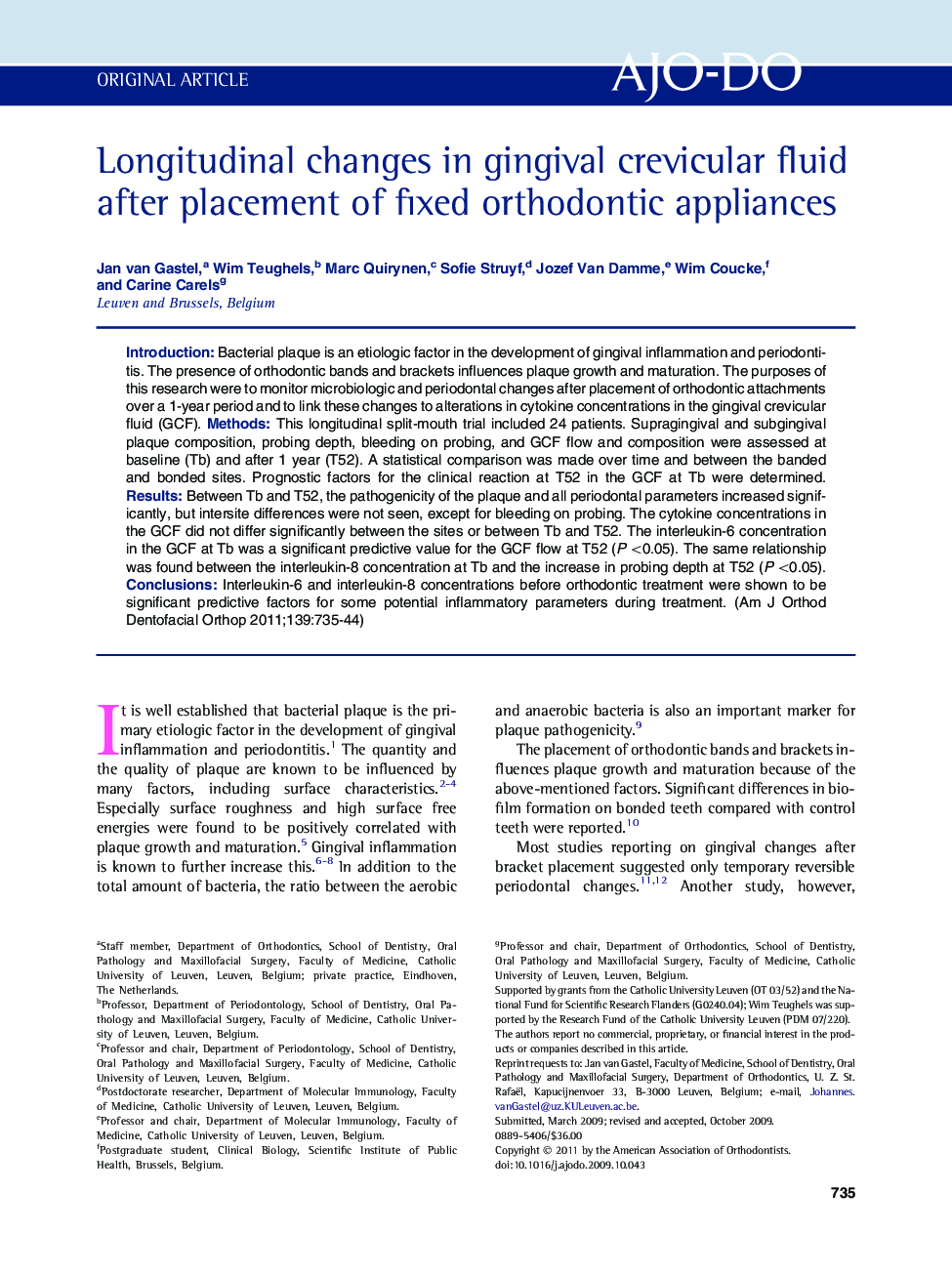| Article ID | Journal | Published Year | Pages | File Type |
|---|---|---|---|---|
| 3117244 | American Journal of Orthodontics and Dentofacial Orthopedics | 2011 | 10 Pages |
IntroductionBacterial plaque is an etiologic factor in the development of gingival inflammation and periodontitis. The presence of orthodontic bands and brackets influences plaque growth and maturation. The purposes of this research were to monitor microbiologic and periodontal changes after placement of orthodontic attachments over a 1-year period and to link these changes to alterations in cytokine concentrations in the gingival crevicular fluid (GCF).MethodsThis longitudinal split-mouth trial included 24 patients. Supragingival and subgingival plaque composition, probing depth, bleeding on probing, and GCF flow and composition were assessed at baseline (Tb) and after 1 year (T52). A statistical comparison was made over time and between the banded and bonded sites. Prognostic factors for the clinical reaction at T52 in the GCF at Tb were determined.ResultsBetween Tb and T52, the pathogenicity of the plaque and all periodontal parameters increased significantly, but intersite differences were not seen, except for bleeding on probing. The cytokine concentrations in the GCF did not differ significantly between the sites or between Tb and T52. The interleukin-6 concentration in the GCF at Tb was a significant predictive value for the GCF flow at T52 (P <0.05). The same relationship was found between the interleukin-8 concentration at Tb and the increase in probing depth at T52 (P <0.05).ConclusionsInterleukin-6 and interleukin-8 concentrations before orthodontic treatment were shown to be significant predictive factors for some potential inflammatory parameters during treatment.
